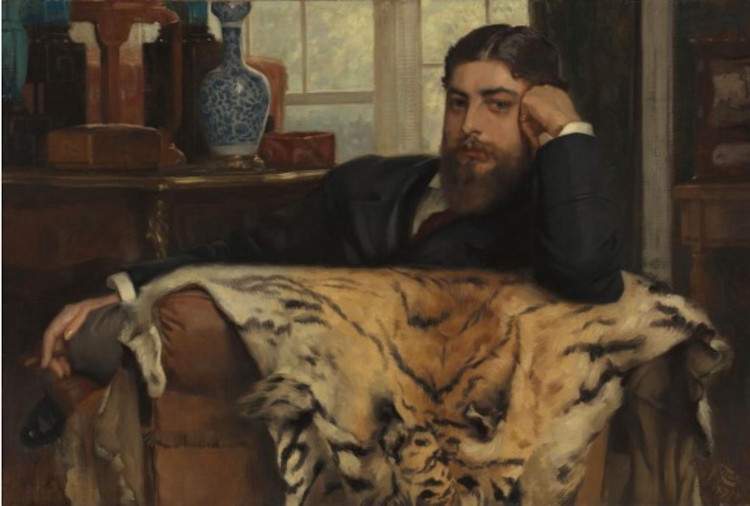The National Portrait Gallery and the National Gallery in London have jointly purchased a portrait of art dealer Algernon Moses Marsden painted by Jacques Joseph Tissot in 1877. The important Victorian painting was thus saved from export. The painting will be exhibited for the first time since its purchase at the National Gallery (it will be the first work by Tissot to enter the collection), before being transferred to the National Portrait Gallery for the museum’s reopening in 2023; in 2024 then the painting will return to the National Gallery to celebrate its bicentennial.
Although the portrait of Algernon Marsden was never exhibited in Tissot’s era, it is considered a masterpiece of Aestheticism, as it testifies to the taste of the time and the painter’s influence on British art.
The National Portrait Gallery brings together more than sixty works by Tissot in its collection. Thanks to the temporary export ban that was placed on the painting in June 2022, the two museums were able to acquire the portrait, thanks in part to the generosity of Sir Martyn Arbib and his sons, descendants of Algernon Marsden.
Marsden’s family were Jewish entrepreneurs who rose from poverty in London’s East End thanks to a fortune amassed in the clothing industry. Rather than going into the family business, Marsden established himself as an art dealer in London in the early 1870s. His personality attracted influential friends and acquaintances, including Tissot, who had recently arrived in London after fleeing Paris. His works attracted the attention of a new class of industrialists and entrepreneurs, including Marsden, who bought and sold his masterpieces and in 1877 commissioned his portrait. Executed in the artist’s studio, the painting shows Marsden at his most successful, relaxed in a leather armchair in a luxurious interior surrounded by objects showing his wealth and sophisticated taste: only four years later he would file for bankruptcy.
“We are delighted to have acquired this important painting for the National Portrait Gallery’s collection and to have kept it out of the country thanks to the generosity of Sir Martyn Arbib and his family. We look forward to working with our colleagues at the National Gallery to ensure the display of the masterpiece in the two different contexts with the goal of making it visible to all our visitors,” said Nicholas Cullinan, director of the National Portrait Gallery.
“We are delighted to partner with our friends at the National Portrait Gallery in ensuring that this wonderful painting remains visible to the public, and we would like to thank Sir Martyn Arbib and his family for their generosity and for making this possible,” added Gabriele Finaldi, director of the National Gallery.
“My sons and I felt it was important to have the portrait of our close relative remain in our country, and we were delighted to provide the funds to enable the National Gallery and the National Portrait Gallery to do so,” concluded Sir Martyn Arbib, Marsden’s descendant.
 |
| National Gallery and National Portrait Gallery purchase Tissot painting to save it from exportation |
Warning: the translation into English of the original Italian article was created using automatic tools. We undertake to review all articles, but we do not guarantee the total absence of inaccuracies in the translation due to the program. You can find the original by clicking on the ITA button. If you find any mistake,please contact us.